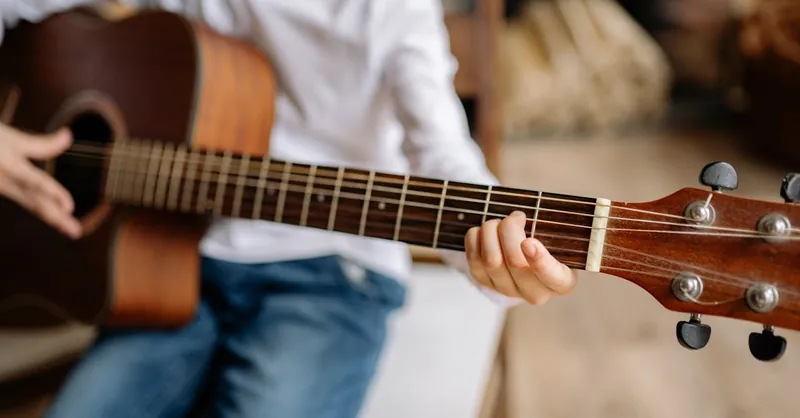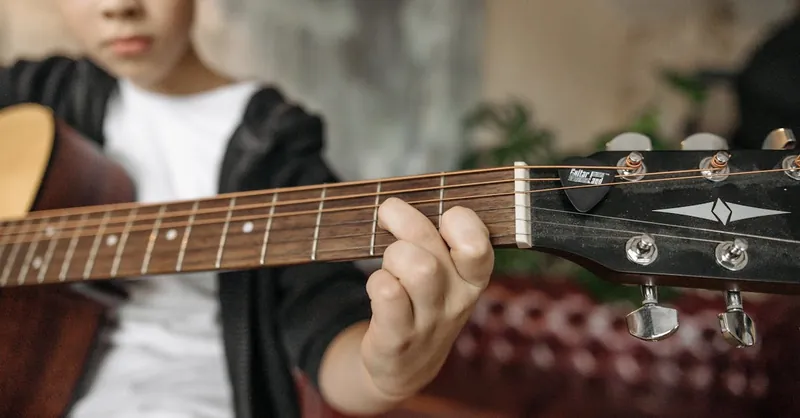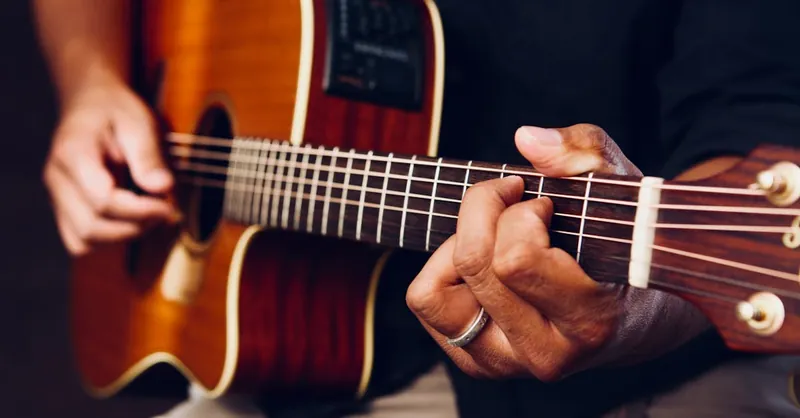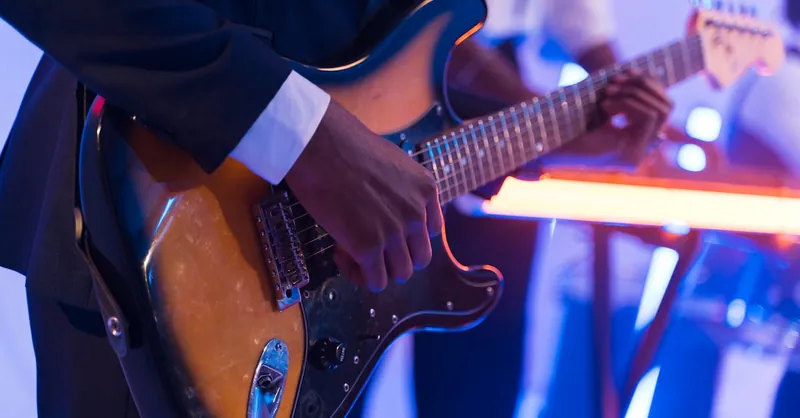How to Improve Guitar Playing Speed Quickly & Effectively
Category: Guitar Gear
Unlock Your Guitar Speed: Master Precision & Agility
If you’re passionate about guitar playing but find yourself struggling to increase your speed without sacrificing accuracy, you’re not alone. Many guitarists hit a plateau where their fingers don’t quite move as fast as their ears want them to. Whether you’re a beginner eager to shred faster riffs or an intermediate player wanting to impress with lightning-fast solos, improving your guitar speed is crucial. This guide is crafted precisely for guitar enthusiasts like you who crave practical, proven techniques to boost playing speed while maintaining clarity.
You’ve likely come here searching for actionable methods beyond just playing faster; you want exercises, mindset shifts, and gear tips that fit your style and skill level. Unlike typical speed tutorials that push speed at the expense of technique, this article breaks down nuanced approaches combining effective practice routines, finger health tips, and rhythm training that professional players swear by. We’ll also cover supporting tools like metronomes and gear settings to optimize your playing environment.
Dive into this comprehensive blueprint that blends technical drills with musicality enhancement, ensuring you develop speed that’s not just fast but expressive, fluid, and sustainable. By the end, you’ll be equipped to take your guitar playing speed to new heights with confidence and precision.
- Unlock Your Guitar Speed: Master Precision & Agility
- Understanding the Foundations: Why Speed Alone Isn’t Enough
- Analyzing Your Current Technique: Identifying Bottlenecks
- Effective Warm-Up Routines: Preparing Your Hands for Speed
- Incremental Speed-Building Practice with a Metronome
- Right-Hand and Left-Hand Coordination Drills: Synchronizing Picking and Fretting Hands for Fluid Playing
- Utilizing Mini Exercises: Chromatic and Scale Runs for Finger Independence
- Incorporating Rhythm and Timing Variations: Enhancing Control and Versatility at High Speeds
- Gear and Setup Tips for Speed: String Gauge, Action, and Effects
- Mindset and Patience: Overcoming Frustration and Plateaus
- Integrating Speed into Musical Contexts: Applying Techniques to Songs and Solos
Understanding the Foundations: Why Speed Alone Isn’t Enough
Before you chase blazing fast riffs or rapid-fire solos, it’s essential to recognize that speed without accuracy and control is counterproductive. Developing lightning-fast guitar technique is not simply about playing as fast as possible; it’s about building a strong foundation composed of accuracy, timing, and finger dexterity. These elements serve as the true pillars for any guitarist aiming to play fast with musicality and clarity.
Accuracy: The Cornerstone of Fast Playing
Playing fast means little if the notes sound muddy or off-pitch. Precision in fretting and picking ensures every note rings cleanly, preventing sloppy execution that only gets worse at higher tempos. Focus on controlled, deliberate finger placement and pick strokes, retracing slower at first to build muscle memory. Accuracy builds confidence, allowing you to gradually increase speed without losing quality.
Timing: Synchronizing Speed with Groove
Speedy licks that ignore rhythm and timing simply become noise. Mastering timing with consistent tempo and groove helps your fast passages lock into the song’s feel rather than sounding rushed or uneven. Using tools like a metronome is invaluable for developing steady rhythmic precision, training your inner clock so speed becomes a natural extension of your playing, not a flurry of disconnected notes.
Finger Dexterity: Building Agile and Independent Movement
Efficient finger movement underpins fast guitar playing. Developing finger strength, independence, and agility allows you to execute complex patterns cleanly and effortlessly. Exercises that isolate each finger help minimize extraneous motion, reduce tension, and make transitions smoother. As dexterity improves, your fingers will respond faster, boosting speed without compromising control.
By prioritizing accuracy, timing, and finger dexterity, you create a solid technical foundation that supports sustainable speed development. This holistic approach leads to fast playing that’s not only impressive but musical, expressive, and repeatable under pressure.

Image courtesy of SHVETS production
Analyzing Your Current Technique: Identifying Bottlenecks
Before you accelerate your playing speed, it’s crucial to evaluate your existing guitar technique to uncover any barriers limiting your progress. Many guitarists unknowingly develop inefficient habits in hand positioning, picking style, and finger movement that directly inhibit speed and fluidity. By methodically analyzing these components, you can pinpoint specific problem areas to focus your practice on, leading to more targeted and effective improvement.
Evaluating Your Hand Positioning
Start by observing your fretting hand posture. Ask yourself:
-
Are your fingers curved naturally over the fretboard, minimizing unnecessary stretch?
Proper curvature ensures faster note changes and reduces tension. -
Is your thumb placed correctly behind the neck, providing stable support without gripping too tightly?
A firm yet relaxed thumb position maximizes finger mobility. -
Do your fingers move independently or do you notice excess motion or unnecessary lifting?
Excessive finger lifting slows down transitions and wastes energy.
Consider filming your playing from multiple angles or practice in front of a mirror to visually assess these points. Small adjustments like relaxing your wrist or aligning your fingers closer to the frets can make a significant speed difference.
Assessing Your Picking Technique
Next, turn your attention to your picking hand. Effective picking mechanics are essential for fast, precise playing:
-
Are you employing alternate picking consistently, or does your picking style vary irregularly?
Mastery of alternate picking is key to increasing speed with minimal effort. -
Is your wrist relaxed and moving fluidly, or are you relying on rigid arm motions?
Controlled wrist and forearm movements reduce fatigue and enhance picking accuracy. -
Are your pick strokes economy-driven, minimizing unnecessary motion, or do you find your pick jumping erratically?
Efficient pick movement directly correlates with faster playing.
Try slowing down challenging passages and closely monitor your picking hand for any tension or inefficiency. Using a metronome during this process reinforces disciplined timing as you rebuild your picking technique.
Monitoring Finger Movement and Synchronization
Finally, focus on the interaction between your fretting and picking hands:
-
Are your fingers moving just in time with the pick, or is there a lag causing timing issues?
Synchronizing both hands is vital to seamless speed execution. -
Do certain finger combinations feel slower or more awkward, indicating specific weak points?
Isolating these trouble spots allows focused exercises to build dexterity and coordination. -
Is there consistent tension in your fretting hand, or do you maintain a relaxed grip even during fast runs?
Over-tension stifles speed and can lead to fatigue or injury.
By thoroughly analyzing these elements, you can create a detailed map of your technical bottlenecks. This personalized insight is invaluable for crafting precise practice routines that address your unique challenges and unlock new playing speeds with greater ease.

Image courtesy of SHVETS production
Effective Warm-Up Routines: Preparing Your Hands for Speed
Before diving into intense speed-building exercises, a proper warm-up routine is essential to prepare your hands, enhance finger flexibility, and prevent injury. Warm-ups activate blood flow to your muscles, increase joint mobility, and mentally prime you for focused practice. Skipping warm-ups can lead to tension, stiffness, and potentially long-term strain — all of which drastically limit your ability to play fast and cleanly.
Finger Stretching and Mobility Exercises
Start with gentle finger stretches to increase flexibility and reduce tightness:
-
Spider Walks: Place your fingers on the fretboard and sequentially lift and place each finger across several frets without moving your hand. This improves finger independence and warms up tendons.
-
Finger Taps: Rest your palm on a flat surface and tap each finger individually against the surface in a rapid, controlled manner. This builds coordination and readies each digit for agile movement.
-
Stretching Holds: Gently pull each finger back for a few seconds to stretch the tendons and maintain healthy finger joint range.
Coordination Drills to Sync Both Hands
Incorporate exercises that promote synchronization between your fretting and picking hands:
-
Slow Chromatic Runs: Play chromatic sequences slowly while using strict alternate picking, focusing on precise timing rather than speed to build accurate muscle memory.
-
String Skipping: Practice scales or simple patterns that skip strings, as this challenges both hands to maintain coordination while navigating wider fretboard stretches.
-
Metronome-Guided Rhythms: Use a metronome to keep a steady tempo, gradually increasing the speed as your hands stay relaxed and synchronized.
Injury Prevention: Staying Safe While Building Speed
Fast playing demands healthy hands. Incorporate these preventive habits to avoid repetitive strain injuries:
-
Keep Your Hands Relaxed: Tension slows your speed and causes fatigue. Check-in frequently during practice to release any tightness.
-
Take Regular Breaks: Follow the 20-5 rule — every 20 minutes of playing, rest for at least 5 minutes to prevent overuse.
-
Warm Up Gradually: Never rush into high-speed playing without warming up your muscles fully.
-
Use Proper Technique: Avoid unnecessary finger lifting or awkward wrist angles to minimize strain.
By integrating these detailed warm-up exercises focusing on finger stretching, hand coordination, and injury prevention, you establish a healthy, efficient foundation essential for accelerating your guitar playing speed. A consistent warm-up routine not only enhances finger agility but also sustains your playing longevity, allowing you to build speed safely and effectively.

Image courtesy of Yan Krukau
Incremental Speed-Building Practice with a Metronome
One of the most effective strategies to build guitar playing speed with precision is to adopt a slow, deliberate practice routine using a metronome. Gradually increasing your tempo in small, manageable increments helps develop muscle memory and finger coordination without sacrificing accuracy or technique. This incremental approach ensures that your playing remains clean and controlled, creating a solid foundation for fast, fluid execution over time.
Why Use a Metronome for Speed Building?
A metronome serves as your exact timing reference, promoting consistent rhythm and preventing the common pitfall of rushing ahead at higher speeds. Practicing with a metronome trains your internal clock, improves timing accuracy, and keeps your focus on playing precisely in sync with each beat. This disciplined rhythmic training is essential for integrating speed seamlessly into musical contexts rather than playing sporadic or uneven fast notes.
How to Structure Your Incremental Speed Practice
-
Start at a Comfortable, Slow Tempo: Choose a tempo where you can play the target exercise or lick perfectly without tension or mistakes. Precision and control take precedence over speed.
-
Play Multiple Repetitions Cleanly: Run the passage several times at this tempo to build muscle memory and reinforce correct finger movement.
-
Increase Tempo Gradually: Raise the metronome by small increments, typically 2-5 beats per minute (BPM). Avoid jumping to a tempo that causes sloppiness or tension.
-
Maintain Relaxation and Focus: Monitor your hand and finger tension as you speed up. If any tightness or inaccuracies appear, reduce the tempo and slow down your progression rate.
-
Repeat the Cycle: Keep repeating this slow-to-fast practice routine, only moving to faster BPMs when the current speed feels effortless and accurate.
Tips for Maximizing Metronome Practice Effectiveness
- Use Subdivisions: Set your metronome to subdivisions (e.g., eighth notes, sixteenth notes) to stay aligned with complex rhythms.
- Alternate Practice Patterns: Work on scales, arpeggios, or challenging riffs to cover varied finger movements and picking patterns.
- Record Your Practice: Listening back helps identify timing inconsistencies and areas needing refinement.
- Be Patient and Consistent: Speed-building is a gradual process. Committing to daily focused practice with a metronome yields the best long-term results.
By embracing incremental speed-building practice paired with metronome discipline, you ensure your guitar speed development stays rooted in accuracy, timing, and control—key factors that professional guitarists rely on to shred with clarity and confidence.

Image courtesy of Pavel Danilyuk
Right-Hand and Left-Hand Coordination Drills: Synchronizing Picking and Fretting Hands for Fluid Playing
Developing perfect synchronization between your right-hand picking and left-hand fretting is critical for achieving fast, clean, and fluid guitar playing. When these two hands fail to coordinate seamlessly, even the quickest fingers can produce sloppy or uneven notes. Incorporating targeted coordination drills in your practice routine trains your brain and muscles to work together efficiently, creating the foundation for effortless speed and precision.
Essential Coordination Exercises for Guitar Speed
-
Alternate Picking with Single-Finger Fretting:
Focus on using one fretting finger while performing strict alternate picking (down-up-down-up) on one string. This isolates the right-hand picking motion and reinforces timing alignment with the fretting hand. -
Chromatic Patterns with Gradual Finger Addition:
Start with two-finger chromatic runs (e.g., index and middle fingers) and progressively add fingers while maintaining consistent alternate picking. This drill develops finger independence and tight right-left hand synchronization over multiple frets. -
String Crossing Synchronization:
Practice simple scale fragments or arpeggios involving string skipping combined with alternate picking. The challenge of coordinating string crossing with fretting hand finger placement improves timing accuracy and hand independence. -
Economy Picking Integration:
Once comfortable with alternate picking, introduce economy picking patterns on repetitive note sequences to refine picking efficiency and hand coordination at higher speeds.
Tips to Maximize Coordination Drill Efficiency
- Use a Metronome: Always perform coordination drills with a metronome to develop steady rhythmic accuracy between both hands.
- Play Slowly and Gradually Increase Speed: Prioritize precision and relaxed movement over tempo to engrain correct coordination.
- Focus on Relaxation: Tension in either hand disrupts synchronization and inhibits speed; keep your hands loose to facilitate smooth motion.
- Break Down Problematic Passages: Identify and isolate difficult fingerings or picking patterns to practice slowly until synchronized.
By dedicating consistent practice to these right-hand and left-hand synchronization exercises, you cultivate a finely tuned interplay between picking and fretting hands. This coordination is the secret to unlocking true fluidity, allowing you to increase speed without sacrificing clarity, accuracy, or musical expression.

Image courtesy of Brent Keane
Utilizing Mini Exercises: Chromatic and Scale Runs for Finger Independence
One of the most effective ways to enhance finger independence and agility is by incorporating targeted mini exercises such as chromatic runs and scale patterns into your daily routine. These drills focus on isolating individual finger movements while maintaining coordination between your fretting and picking hands, which directly contributes to faster and cleaner playing. Chromatic exercises, which involve playing consecutive frets with each finger in sequence, are particularly valuable for training your fingers to move independently, building strength, and reducing excess motion. Meanwhile, scale runs—performed slowly and deliberately at first—help reinforce muscle memory for common fretboard patterns while improving smooth transitions and finger placement accuracy.
Essential Chromatic and Scale Patterns to Boost Finger Agility
- Four-Finger Chromatic Run: Play each fret sequentially with fingers 1 through 4 on one string, using strict alternate picking. This simple yet powerful exercise improves finger independence, control, and synchronization.
- Three-Note-Per-String Scale Runs: Practice major, minor, or pentatonic scales using three notes on each string while maintaining steady alternate picking. These runs develop smooth string transitions and finger fluidity essential for fast soloing.
- Spider Exercises: Create patterns that involve alternating fretting fingers diagonally across strings, challenging your finger coordination and minimizing finger lifting.
- String-Skipping Patterns: Incorporate scales or arpeggios that skip strings methodically to enhance both finger dexterity and right-hand accuracy.
By incorporating these mini exercises consistently into your warm-up or focused practice sessions, you train your fingers to operate with greater independence and speed. Consistency is key—practicing even just a few minutes daily can drastically improve finger agility and ultimately accelerate your overall playing speed without compromising precision or tone quality.

Image courtesy of cottonbro studio
Incorporating Rhythm and Timing Variations: Enhancing Control and Versatility at High Speeds
Mastering speed on the guitar isn’t just about playing notes faster; it’s equally important to develop control over rhythmic nuances and timing variations. By intentionally varying note durations and experimenting with different rhythmic patterns, you build a deeper understanding of groove and phrasing, which directly translates into cleaner, more expressive fast playing. Training your rhythmic precision allows you to break away from monotonous, mechanical runs and inject musicality into your licks—even at blistering tempos.
How Rhythm Variations Improve Speed and Accuracy
Introducing syncopation, triplets, dotted notes, and varying note lengths during speed exercises forces your hands to adapt to shifting subdivisons and timing challenges. This creates a refined sense of internal timing, making your speed more fluid and natural rather than rigid or robotic. For example:
- Playing sixteenth notes followed by eighth notes at high speed demands exact control to seamlessly change pacing without losing tempo.
- Incorporating triplet feel runs enhances your ability to subdivide beats differently, improving dexterity and rhythmic flexibility.
- Mixing staccato and legato articulations within fast passages develops dynamic finger control and right-hand picking precision.
Practical Tips to Apply Rhythm and Timing Variations
- Use your metronome set to various subdivisions (e.g., quarter notes, triplets, sixteenth notes) and cycle through exercises emphasizing these different rhythms.
- Practice common rhythmic motifs such as dotted rhythms or syncopated accents integrated into your scale or arpeggio patterns.
- Experiment with temporal displacement, starting phrases off the beat or shifting accents to build stronger rhythmic awareness and control.
- Record yourself playing rhythmically varied exercises to identify improvements or sticking points in your timing accuracy.
By integrating rhythmic and timing variations into your speed-building practice, you enhance not only your technical ability but also your musical versatility. This expanded rhythmic control enables you to perform complex and diverse fast passages confidently, enriching your overall guitar playing speed with precision, expression, and groove.

Image courtesy of ANTONI SHKRABA production
Gear and Setup Tips for Speed: String Gauge, Action, and Effects
Optimizing your guitar’s physical setup and selecting the right gear can significantly enhance your playing speed by reducing physical resistance and improving tonal clarity. Even the most skilled players encounter bottlenecks when the instrument’s characteristics aren’t conducive to fast, fluid movement. Paying attention to string gauge, action height, and effects settings can create an environment that supports smoother finger transitions and effortless picking, allowing you to focus purely on technique and musicality.
Choosing the Right String Gauge for Faster Playing
Lighter gauge strings are generally preferred by players aiming to increase speed because they require less finger pressure and are easier to bend and manipulate quickly. Consider the advantages:
- Lower String Tension: Thinner strings (such as .008–.038 or .009–.042 sets) reduce finger fatigue and enable faster fretting hand movements.
- Faster Vibrations: Lighter strings respond quickly to picking, aiding clarity at high speeds.
- Improved Articulation: Easier string bending and vibrato techniques become more accessible in fast solos or lead playing.
However, note that extremely light strings might compromise tone or tuning stability. Experiment with string gauges to find the ideal balance between playability and sound that complements your style.
Setting Your Action for Optimal Speed and Comfort
The action—distance between the strings and fretboard—directly impacts how effortless your fretting hand can navigate the neck, especially at high tempos:
- Lower Action: Makes fretting notes quicker and less strenuous, which is ideal for speed-focused playing.
- Avoiding Fret Buzz: While lowering action improves speed, it’s essential to set it just right to avoid fret buzz that can muddy fast passages.
- Personal Preference: Action height is subjective; some players opt for slightly higher action to maintain tone and dynamic control.
Regularly tune up your guitar’s setup with a professional or learn to adjust the truss rod, saddle height, and nut slots to maintain a low-action environment that allows agile finger movement without sacrificing sound quality.
Leveraging Effects to Enhance Playing Speed and Clarity
Gear such as compression pedals, delay effects, and amplification settings can subtly influence your perceived speed by improving note clarity and sustain, crucial for fast playing precision:
- Compression Pedals: Smooth out dynamics and boost sustain, ensuring each fast-picked note rings clearly without volume dips.
- Delay and Reverb: Used tastefully, delay effects can fill sonic gaps, giving your fast runs a more fluid, continuous feel. Avoid excessive or long delays that clutter fast passages.
- Amp Settings: Dial in settings that emphasize midrange clarity and tight low-end response to accentuate note articulation at high speeds.
Quick Tips to Optimize Your Gear Setup for Speed
- Use light gauge strings to minimize finger strain and improve response.
- Adjust the action height for a comfortable fretting experience without buzz.
- Experiment with compression to maintain consistent note volume.
- Keep your pickup height balanced for even output across strings.
- Fine-tune amp EQ for a sharp attack and clear note definition.
By investing time in your guitar’s setup and carefully selecting supporting effects, you create a physical and tonal foundation that facilitates faster, cleaner playing while reducing fatigue — empowering you to shred with confidence and precision.

Image courtesy of ROMBO
Mindset and Patience: Overcoming Frustration and Plateaus
Improving guitar playing speed is as much a psychological journey as it is a physical one. Developing a growth mindset and cultivating patience are vital for maintaining motivation, overcoming frustrating plateaus, and preventing injury during your speed training. Many guitarists experience moments where progress seems to stall, or tension in the hands leads to discomfort, which can easily derail improvement if not addressed with the right mental approach.
Embrace Patience and Consistent Progress
Speed development is a gradual process that requires steady, deliberate practice rather than rapid, unsustainable bursts. Trying to rush through technical challenges often leads to sloppy technique and physical strain. Instead:
- Set realistic goals: Break down your speed targets into small, achievable milestones.
- Focus on quality over quantity: Prioritize clean execution even if that means practicing at slower tempos.
- Celebrate incremental improvements: Recognize every small gain as a step forward rather than fixating on immediate high speed.
Remember, consistent daily practice—even in short sessions—builds long-term muscle memory, making fast playing natural and effortless over time.
Manage Frustration and Avoid Burnout
Frustration is natural when pushing your limits, but it’s essential to address it constructively to maintain focus and enjoyment:
- Take mindful breaks: Step away regularly during sessions to reset your mind and reduce tension.
- Practice mental visualization: Imagine playing fast and clean successfully to build confidence.
- Keep a practice journal: Tracking progress helps identify patterns, strengths, and areas needing adaptation.
- Stay inspired: Listen to guitarists you admire playing fast passages with precision to fuel motivation.
Protect Your Hands: Injury Prevention through Mindfulness
Avoiding injury is crucial to sustain your speed-building journey. Pay attention to subtle signs of discomfort and avoid playing through pain:
- Maintain relaxed hands and wrists during practice to prevent repetitive strain.
- Incorporate hand stretches and warm-ups before every session.
- Adjust your practice intensity according to how your body feels rather than pushing through exhaustion.
- If pain or numbness occurs, consult a professional and rest adequately to prevent chronic injury.
By integrating these psychological strategies—a growth mindset, patience, frustration management, and mindful injury prevention—you ensure your guitar speed development is not only faster but also healthier and more fulfilling. This balanced mental approach complements your technical drills, creating a sustainable path to master blazing guitar speed with confidence and precision.

Image courtesy of Gustavo Fring
Integrating Speed into Musical Contexts: Applying Techniques to Songs and Solos
Building raw speed through exercises and drills is essential, but the true mastery of fast guitar playing lies in translating that technical speed into meaningful musical expression. Integrating speed techniques into your actual songs and solos ensures that your fast playing enhances the melody, phrasing, and emotional impact rather than sounding mechanical or disconnected. This section guides you on how to blend speed with creativity, making your fast runs dynamic and musically relevant.
Applying Speed Drills Musically
-
Select Musical Phrases or Solos that Incorporate Speed Elements
Start by identifying riffs or solo sections from your favorite songs that use fast passages. Break them down slowly and incorporate the speed-building techniques you’ve practiced, such as alternate picking or chromatic runs, focusing on phrasing and dynamics. -
Use Speed as a Tool, Not Just a Display of Skill
Fast playing should serve the song’s emotional context. Employ bursts of speed selectively — for example, use rapid runs to build tension before a melodic climax, or accentuate rhythmic grooves with fast picking patterns. This enhances the storytelling aspect of your playing. -
Imitate and Innovate
Learn solos from renowned guitarists known for their speed and musicality, such as Steve Vai, Paul Gilbert, or Tosin Abasi. While studying their techniques, analyze how they balance speed with phrasing. Use this insight to develop your own expressive fast licks.
Incorporating Musical Techniques for Expressive Speed
- Vibrato and Bends: After playing a fast run, add expressive vibrato or pitch bends to emphasize important notes, giving your speedy passages personality and feel.
- Dynamic Variation: Use volume swells, palm muting, or picking intensity changes within fast phrases to avoid monotony and bring your solos to life.
- Note Grouping and Rhythmic Phrasing: Divide fast note sequences into rhythmic motifs or “phrases” that listeners can latch onto. This creates a sense of melody instead of a barrage of notes.
By consciously applying your speed-building skills within the context of songs and improvised solos, you transform technical proficiency into compelling musical statements. This integration not only improves your overall guitar playing artistry but also makes your fast playing feel intentional, natural, and enjoyable both for you and your audience.

Image courtesy of Sami Abdullah
